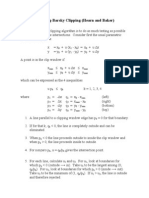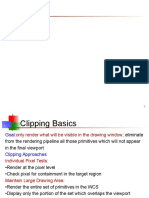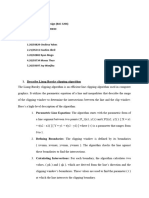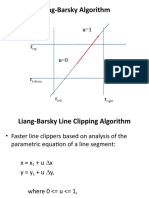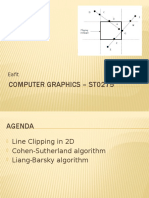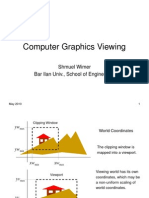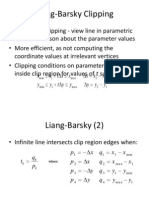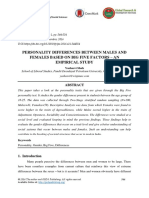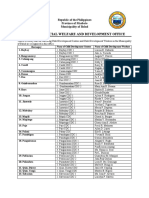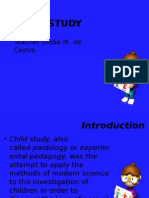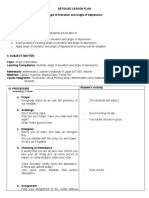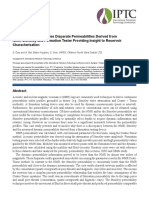BCS-6 [Computer Animation and Graphics]
Liang-Barsky Line ClippingAlgorithm
The Liang-Barsky algorithm is a line clipping algorithm. This algorithm is more efficient
than Cohen–Sutherland line clipping algorithm and can be extended to 3-Dimensional clipping.
This algorithm is considered to be the faster parametric line-clipping algorithm. The following
concepts are used in this clipping-
The parametric equation of the line.
The inequalities describing the range of the clipping window which is used to determine
the intersections between the line and the clip window.
The parametric equation of a line can be given by-
X = x1 + t(x2-x1)
Y = y1 + t(y2-y1)
Where, t is between 0 and 1.
Then, writing the point-clipping conditions in the parametric form:
xwmin <= x1 + t(x2-x1) <= xwmax
ywmin <= y1 + t(y2-y1) <= ywmax
The above 4 inequalities can be expressed as-
tpk <= qk
Where k = 1, 2, 3, 4 (correspond to the left, right, bottom, and top boundaries, respectively).
The p and q are defined as-
p1 = -(x2-x1), q1 = x1 - xwmin (Left Boundary)
p2 = (x2-x1), q2 = xwmax - x1 (Right Boundary)
p3 = -(y2-y1), q3 = y1 - ywmin (Bottom Boundary)
p4 = (y2-y1), q4 = ywmax - y1 (Top Boundary)
1. When the line is parallel to a view window boundary, the p value for that boundary is
zero.
2. When pk < 0, as t increase line goes from the outside to inside (entering).
3. When pk > 0, line goes from inside to outside (exiting).
4. When pk = 0 and qk < 0 then line is trivially invisible because it is outside view window.
5. When pk = 0 and qk > 0 then the line is inside the corresponding window boundary.
Using the following conditions, the position of line can be determined:
Condition Position of Line
pk = 0
parallel to the clipping boundaries
Mubeen Rafaqat
�BCS-6 [Computer Animation and Graphics]
pk = 0 and qk < 0
completely outside the boundary
pk = 0 and qk >= 0
inside the parallel clipping boundary
pk < 0
line proceeds from outside to inside
pk > 0 line proceeds from inside to outside
Parameters t1 and t2 can be calculated that define the part of line that lies within the clip
rectangle.
When,
pk < 0, maximum(0, qk/pk) is taken.
pk > 0, minimum(1, qk/pk) is taken.
If t1 > t2, the line is completely outside the clip window and it can be rejected. Otherwise, the
endpoints of the clipped line are calculated from the two values of parameter t.
Algorithm –
1. Set tmin=0, tmax=1.
2. Calculate the values of t (t(left), t(right), t(top), t(bottom)),
(i) If t < tmin ignore that and move to the next edge.
(ii) else separate the t values as entering or exiting values using the inner product.
(iii) If t is entering value, set tmin = t; if t is existing value, set tmax = t.
3. If tmin < tmax, draw a line from (x1 + tmin(x2-x1), y1 + tmin(y2-y1)) to (x1 + tmax(x2-x1), y1 +
tmax(y2-y1)).
4. If the line crosses over the window, (x1 + tmin(x2-x1), y1 + tmin(y2-y1)) and (x1 + tmax(x2-
x1), y1 + tmax(y2-y1)) are the intersection point of line and edge.
Mubeen Rafaqat


